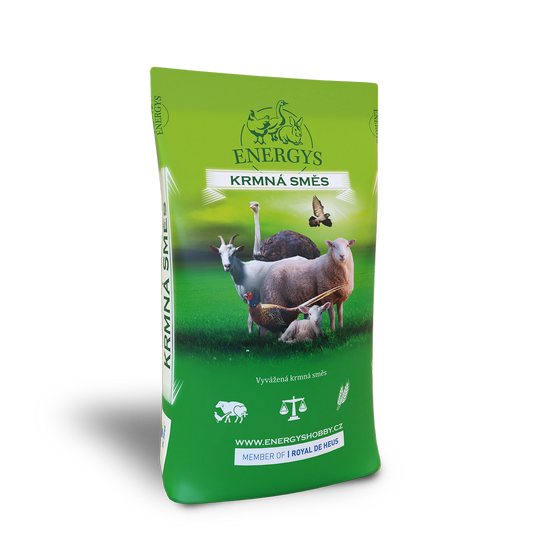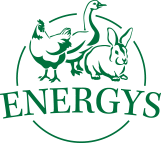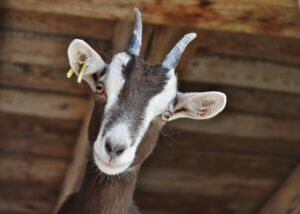Rabbits
Poultry
Laying hens
Quails
Guinea pigs
Pigs
Ostriches
Sheep and goats
Pigeons
Pheasants
Forest animals
BREEDS OF GOAT KEPT IN THE CZECH REPUBLIC
Dairy breeds (White and Brown short-haired, Anglo-Nubian, Alpine and Saanen), meat breeds (Boer), combined breeds (Valais), fibre-producing breeds (Cashmere, Angora) and dwarf breeds (Dwarf Dutch) are all kept in the Czech Republic due to their range of use.
Breeds of goat kept in the Czech Republic
Our national breeds – the White short-haired (2,570 animals) and Brown short-haired (1,272 animals) – are the most popular goat breed in this country. The remaining animals are from the Anglo-Nubian (566, Saanen (660), Alpine (39), Valais (18), Boer (226), Cashmere (14), Angora (42) and Dwarf Dutch (56) breeds. However, it is estimated that there are around two and a half times more goats kept in this country.
Dairy breeds (White and Brown short-haired, Anglo-Nubian, Alpine and Saanen), meat breeds (Boer), combined breeds (Valais), fibre-producing breeds (Cashmere, Angora) and dwarf breeds (Dwarf Dutch) are all kept in the Czech Republic due to their range of use.
Goat breed traits
White short-haired goat
The White short-haired goat breed was created in the first half of the 20th century in the Czech lands by crossing the original regional types of goat with imported bucks from the Saanen breed from Switzerland and Germany. This is a medium-sized breed with a calm temperament, a rectangular body and robust constitution, and moderately long, straight limbs. Adults does are 70 – 80 cm tall at the whither and weigh 50 – 60 kg, bucks are 75-85 cm tall and weigh up to 90 kg.
This national breed of goat, which occurs with or without horns, is popular among breeders due to its good fertility and excellent milk yield. Does produce an average of 700-1,100 kg milk with 3.4 – 3-7% butterfat and a protein content of 2.8-3.1%. This breed has been registered as a genetic animal resource since 1992.
Brown short-haired goat
The Brown short-haired goat breed was created by crossing the original pied and brown types of goat with imported bucks from the Harz breed from Germany. This breed can occur with or without horns, it has a calm temperament, is medium to large in size with a rectangular body and robust constitution, and moderately long, straight limbs. The height of adult does is 60 – 70 cm at the withers, bucks are 70 – 80 cm tall, does weigh 50 – 55 kg and bucks 70 – 85 kg. This breed is distinguished by its high fertility and excellent milk yield. Does produce an average of 700-1,100 kg milk with 3.4 – 3-7% butterfat and a protein content of 2.9-3.2%. This breed has been registered as a genetic animal resource since 1992.
Anglo-Nubian goat
The Anglo-Nubian goat was created by crossing local English goats with oriental lop-eared breeds. This is a large goat with a robust constitution, with long legs and a typical roman nose with broad lop ears. Adult bucks weigh 90-110 kg and does weigh 60 – 80 kg. Does are 80 – 90 cm tall at the withers and bucks 90 – 110 cm. This breed is distinguished by its high fertility and excellent milk yield. Does produce an average of 1,200-1,500 kg milk with 4.7 – 3-7% butterfat and a protein content of 3.9%.
Saanen goat
The Saanen goat comes from the region of Bern in Switzerland. This is a larger breed with a calm temperament, a rectangular body and robust constitution, and moderately long, straight limbs. Saanen goats can also occur with or without horns. Adult does are 75 – 85 cm tall at the withers and weigh 55 – 75 kg, bucks are 90-100 cm tall and weigh up to 80-100 kg. This breed is distinguished by its high fertility and excellent milk yield. Does produce an average of 1,100-1,300 kg milk with 3.4 – 3-7% butterfat and a protein content of 3.1-3.3%.
Alpine goat
The Alpine goat is a French medium-sized breed, which was created by crossing local breeds of goat with brown breeds. This resulted in several colour varieties with predominant two-tone chamoisee colouring, with a black stripe on the back. Adult does are 70 – 90 cm tall at the withers and weigh 50 – 80 kg, bucks are 90-100 cm tall and weigh 80-100 kg. This breed is distinguished by its high fertility and excellent milk yield. Does produce an average of 700-800 kg milk (record 2,400 kg), with 3.3 % butterfat and a protein content of 3.5%.
Boer goats
Boer goats were bred in the nineteen forties in the South African Republic by crossing local goats with the Bantu, Cashmere and some European and Indian breeds. This is a larger goat with excellent muscling and a robust constitution. Adult does are 50 – 60 cm tall at the withers, bucks are 70 – 80 cm tall. While adult does reach a weight of 55 – 75 kg, adult bucks weigh 90 – 130 kg. Boer goats are a horned meat breed with an excellent milk yield and fertility.
Valais Blackneck goat
The Valais Blackneck was bred in the Swiss canton of Valais in the harsh conditions of the Bern, Ticino and Valais Alps. Their robust and undemanding constitution is the main advantage of this combined long-haired, horned, attractive breed with very good milk yield and meat yield, which predetermines this breed for use in extensive farming conditions. The long-hair, which is black on the front half of the body and white on the rear half, is a typical trait of this breed. This is a larger breed with good muscling and a robust constitution. Adult does are 70 – 75 cm tall at the withers and weigh 50 – 55 kg, bucks are 75-85 cm tall and weigh 65-75 kg.
Angora goat
The Angora goat was bred in the Near East (Turkey). Its unusual hair, which covers its entire body to a length of around 30 cm, including its stomach and limbs and forms a mop on its forehead, contains minimum natural grease. The fleece contains 80% semi-guard hairs, 18% undercoat, 2% guard hairs – dead hairs. The range of hairs with high crimping and excellent lustre is C-D/E (30 – 45 µm). This is a smaller breed with good muscling and a robust constitution.
Adult does are 30 – 45 cm tall at the withers and weigh 30 – 35 kg, bucks are 50-60 cm tall and weigh 40-45 kg.
Cashmere goat
The Cashmere goat was bred in Central Asia. Its fleece is dense, consisting of semi-guard hairs of a diameter of 35-50 µm, mohair undercoat has a diameter of 7 – 20 µm. This is a smaller breed with good muscling and a robust constitution. Adult does are 55 – 60 cm tall at the withers and weigh 35 – 45 kg, bucks are 60-70 cm tall and weigh 55-60 kg.
Dwarf Dutch goat
The Dwarf Dutch goat breed was created in the second half of the twentieth century in Holland. This is a horned goat with a calm temperament, a small, rectangular body, with a robust constitution and short, straight legs. Adult does are 40 – 50 cm tall at the withers and weigh up to 25 kg, bucks are 50-60 cm tall and weigh up to 40 kg.
Related posts
19. September 2019
Due to the growing human population and the shortage of sources of protein, goats, as undemanding but highly productive animals, will become increasingly important to man, who they have served for thousands of years. What to feed goats and how to take care of them?
12. September 2019
Dairy breeds (White and Brown short-haired, Anglo-Nubian, Alpine and Saanen), meat breeds (Boer), combined breeds (Valais), fibre-producing breeds (Cashmere, Angora) and dwarf breeds (Dwarf Dutch) are all kept in the Czech Republic due to their range of use.
Related products

SHEEP UNI
A supplementary feed mix for weaning and fattening sheep and goats. It can also be used for lamas. The feed is treacled and also suitable for gestating and milking animals. The substances contained in it support their excellent state of health a required breeding results.

LAMB
A starter for lambs and kids suitable from the first week to the 3rd week of age. First it is added to milk, later it is combined with hay. It supports the growth of a paunch, the growth of bones and muscle.

